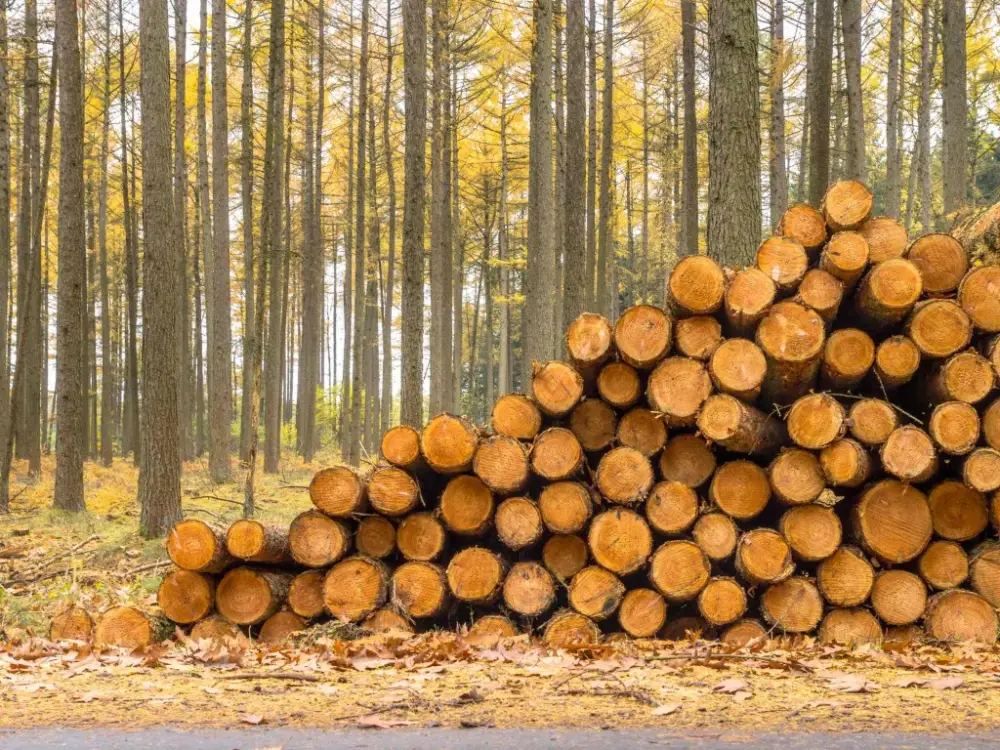Romania`s Wood Processing Industry: Still in Crisis or Facing a Temporary Decline?
Editor WoodBusinessPortal.com team - research, 2025 - October, 21
Romania`s forestry and wood processing sector remains a key pillar of the national economy. Recent estimates show that the wood-based industry generates about EUR 7.1 billion annually and contributes roughly 3.5% of GDP, including direct and indirect effects. Romania`s wood product exports (including furniture) have consistently exceeded USD 1 billion per year, accounting for around 11 % of total national exports.
However, behind these impressive figures lies a worrying reality: the industrial production index for the wood sector has declined significantly, and many companies reported losses in 2024.
The key question for professionals is clear: Is Romania`s wood industry still in crisis — and if so, when can it recover?
According to recent data, Romania`s wood processing production index dropped to 80.3 % of 2022 levels, recovering slightly to 88 % in 2024 and 94.7 % in Q1 2025. This confirms that the sector is operating “with the brakes on,” facing reduced demand, higher costs, and financial distress. The sawmilling and wood planing segment is expected to reach a market size of around EUR 1.1 billion in 2025, but has shown a negative CAGR of about –6.3 % between 2019–2024.
Similarly, the wood and straw product manufacturing subsector, which includes over 2,800 companies, recorded an average annual contraction of about –1.6 % during the same period.
A 2024 survey of 5,531 companies in the sector revealed combined losses of approx. RON 635.7 million (over EUR 120 million), and the workforce decreased by 4,600 employees year-over-year. This suggests mounting pressure on SMEs, which lack sufficient capital buffers to handle volatility in raw material and energy costs.
Romania exports wood and wood-derived products primarily to Italy, Germany, Hungary, China, and Poland. Notably, over half of Romania`s wood exports go outside the EU. Between October 2023 and September 2024, raw timber exports dropped by about 34 %, mirroring a decline in imports. Romania imports timber primarily from Germany, Poland, Hungary, Italy, and Austria.
Trade Challenges:
- Export dependency: the sector is highly exposed to global market volatility and tariff barriers.
- Rising costs: energy and raw material costs erode competitiveness.
- Regulatory uncertainty: frequent debates over restrictions on raw timber exports (“ban on unprocessed wood exports”) undermine long-term planning.
- Structural Pressures: What Keeps the Sector Struggling.
Raw Material Shortages and Forest Management Inefficiency:
Only about 60 % of Romania`s annual forest growth is sustainably harvested, below the EU average of > 70 %. Illegal logging remains a critical issue, estimated at up to 20 million m³ per year, distorting market prices and undermining trust. Frequent amendments to forestry legislation add to investor uncertainty.
High Energy and Logistics Costs:
Energy-intensive industries such as sawmilling are particularly affected by electricity and fuel price spikes.
International Competition and Substitutes:
Competing materials (steel, concrete, composites) and low-cost suppliers from outside the EU are eroding Romania`s export competitiveness.
SME Vulnerability and Financing Gaps:
Many small and mid-sized firms lack access to capital, modern equipment, or “green” finance required to adapt to sustainability standards.
Outlook and Emerging Trends:
- Moderate Growth Forecast: The Romanian wood products market is projected to reach ˜ EUR 2.85 billion by 2028, up from ˜ EUR 2.44 billion in 2023 — an annual average growth of ˜ 2.5 %.
- Expansion of Engineered Wood Segment: Engineered wood (OSB, LVL, CLT) is expected to drive the next growth wave, supported by sustainable construction trends.
- Digitalization and Traceability: Integrating blockchain and GIS-based monitoring tools could strengthen supply-chain transparency and access to premium markets.
- EU Green Funding and Sustainability Incentives: European funds for decarbonization, energy efficiency, and circular economy projects represent a viable path for mid-term recovery.
- Industry Consolidation: The coming years may bring more mergers and acquisitions, as larger players absorb smaller, undercapitalized companies.
Conclusion: Crisis or Transition? The data clearly shows that Romania`s wood processing industry remains under stress, with lower output, declining margins, and unpredictable regulation. Yet, the downturn appears more cyclical than terminal — a phase of adjustment rather than collapse.
For B2B stakeholders, the way forward lies in:
- embracing sustainability and full traceability,
- diversifying product portfolios (especially engineered wood),
- improving operational efficiency,
- integrating into international value chains, and
- leveraging platforms like WoodBusinessPortal.com - a central hub for market insights, trade data, and global networking across the wood sector.
Sources:
1. fao.org
2. ibisworld.com
3. wits.worldbank.org
4. romania-insider.com
5. occrp.org
6. reportlinker.com
7. 6wresearch.com
